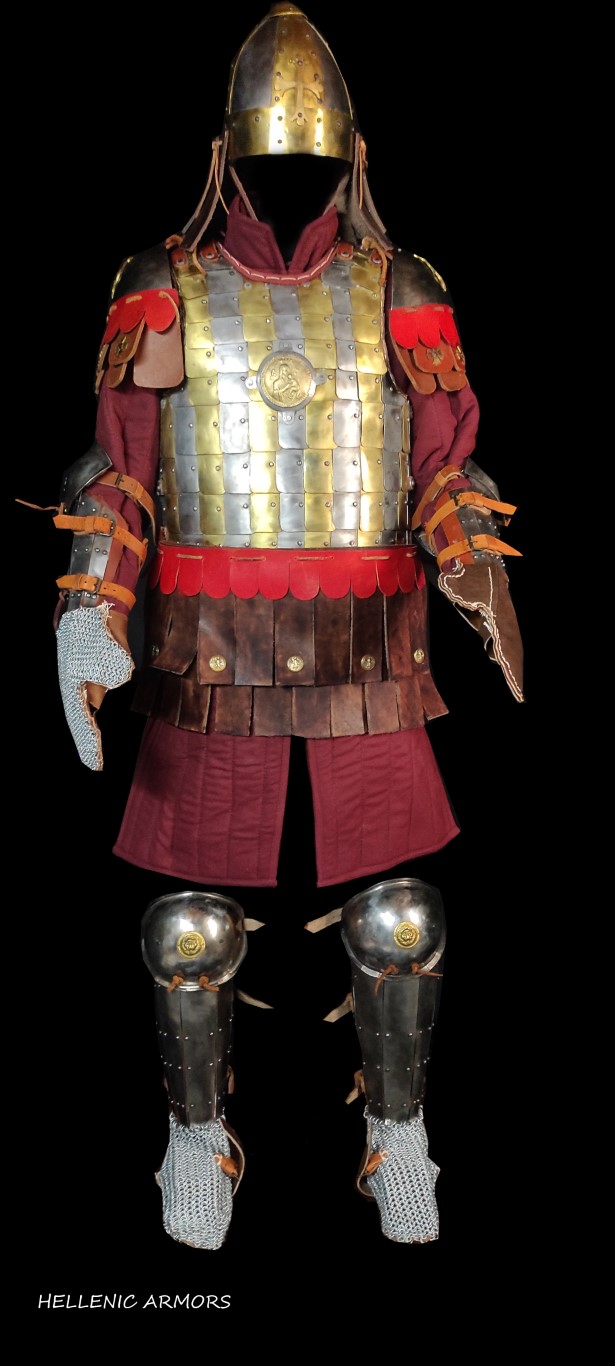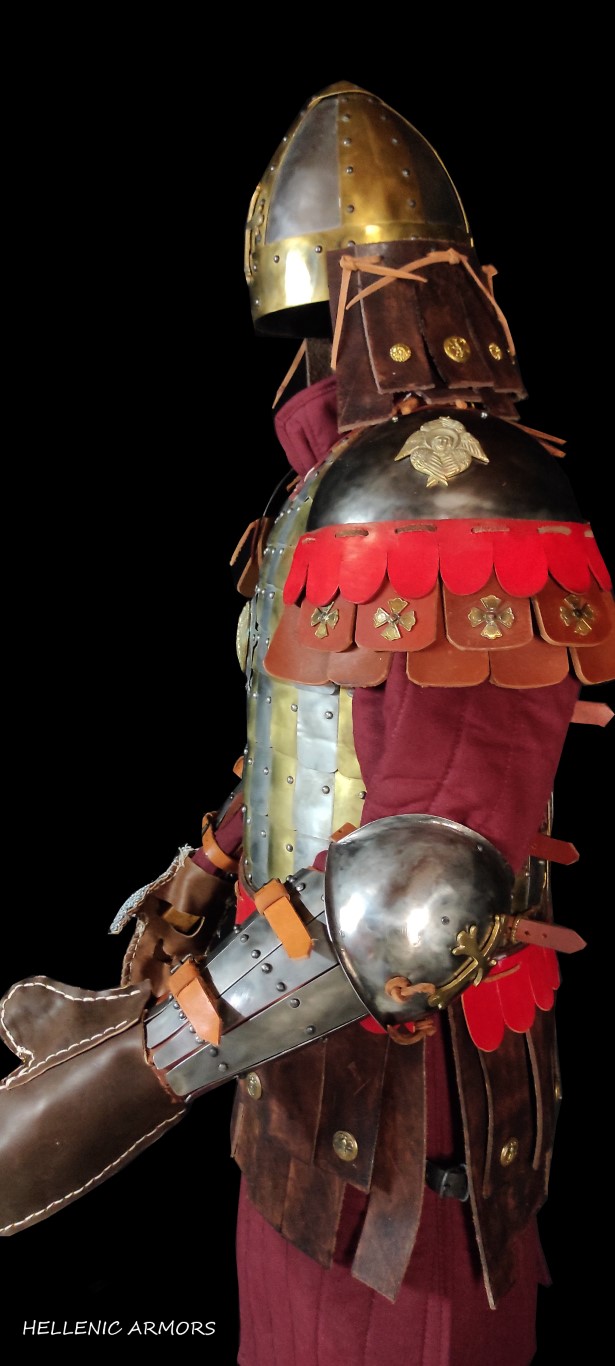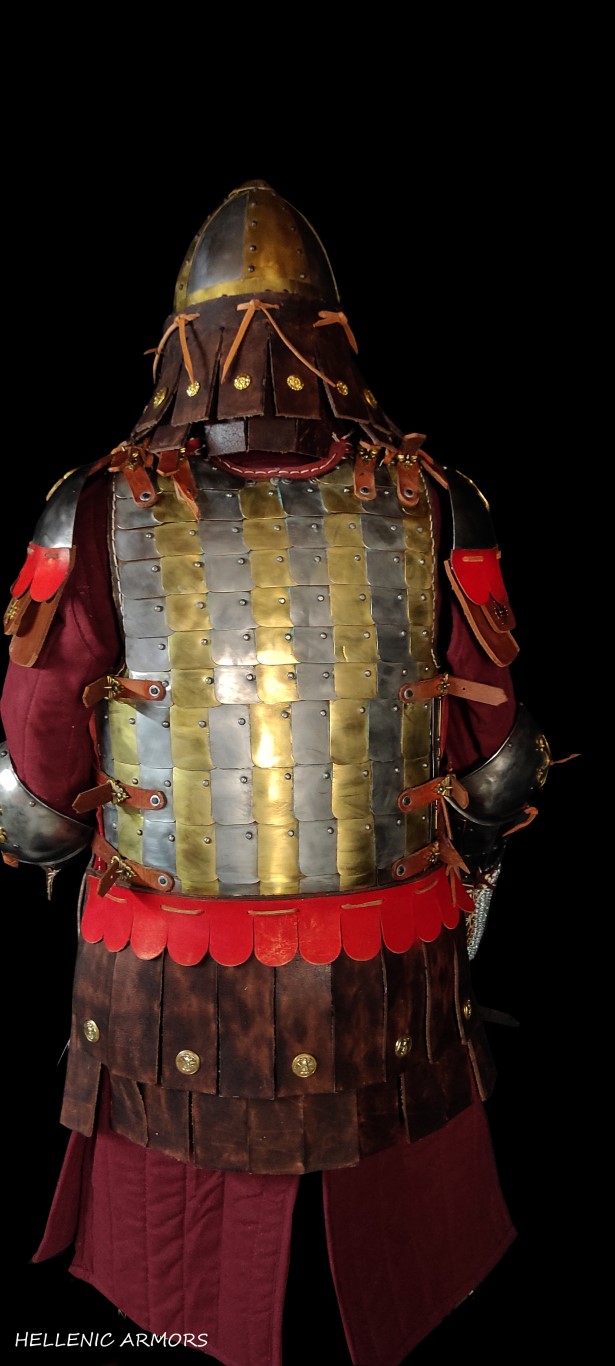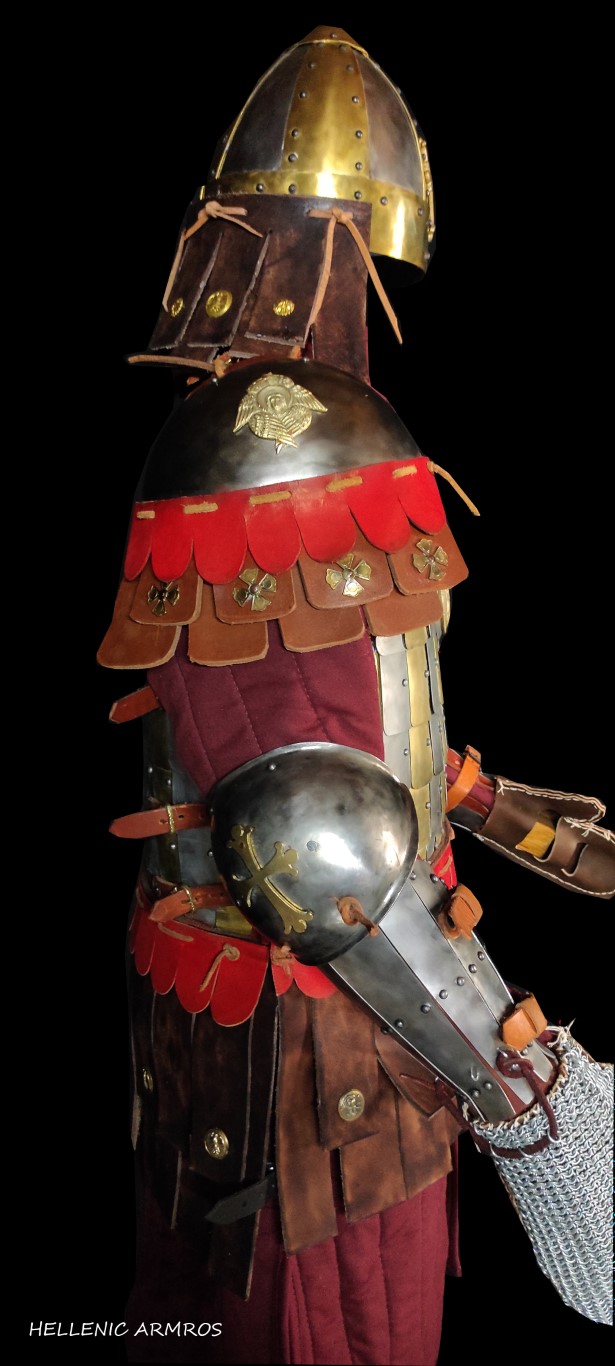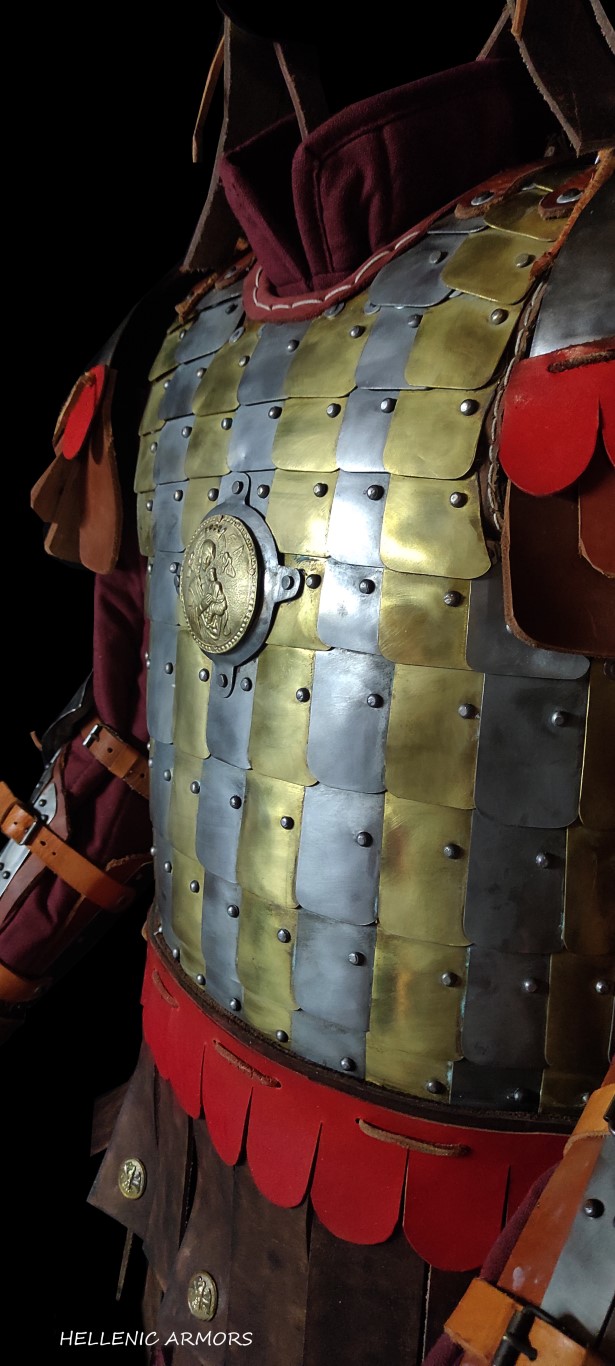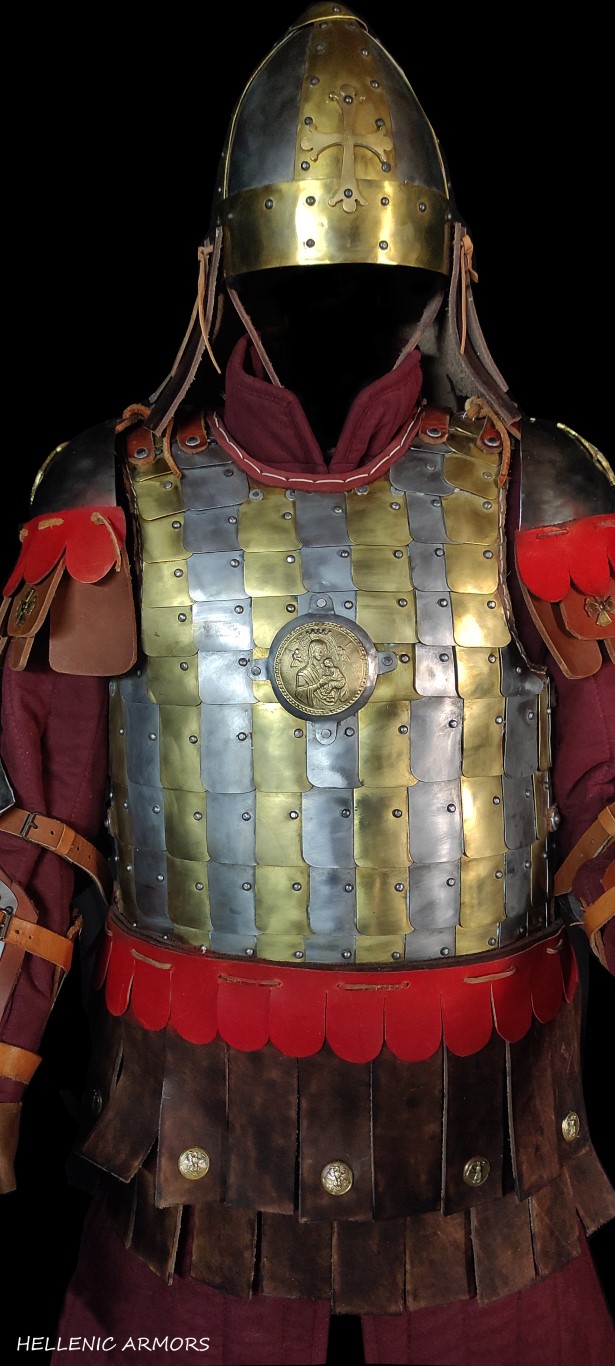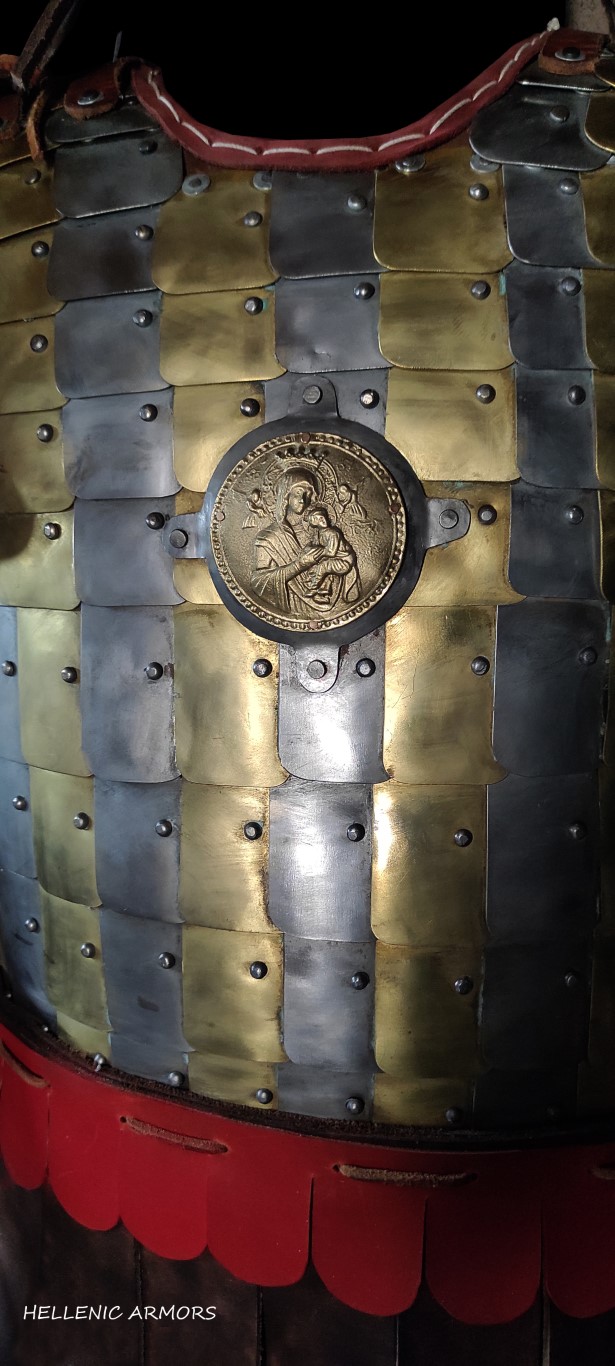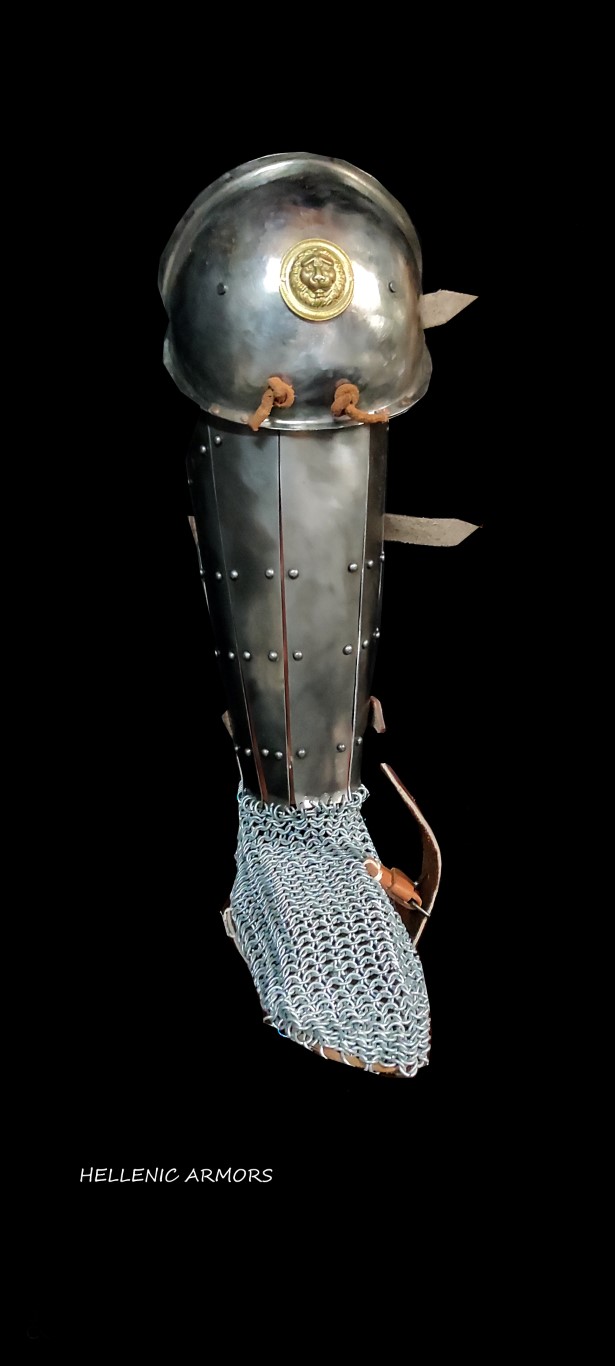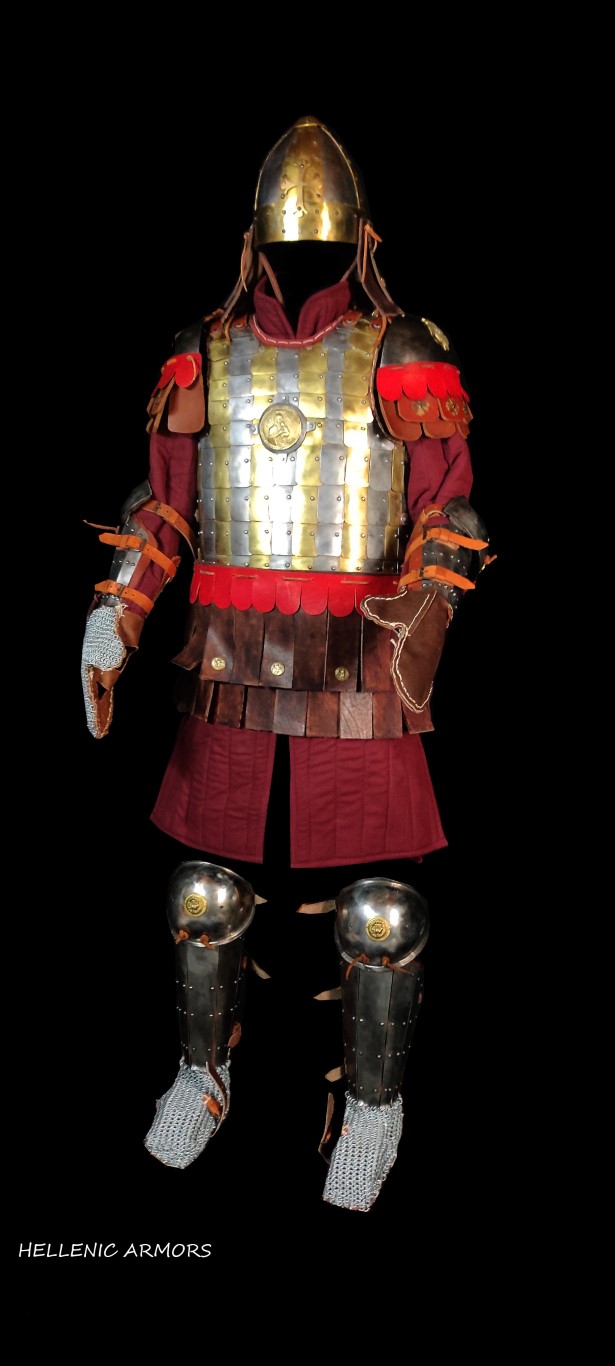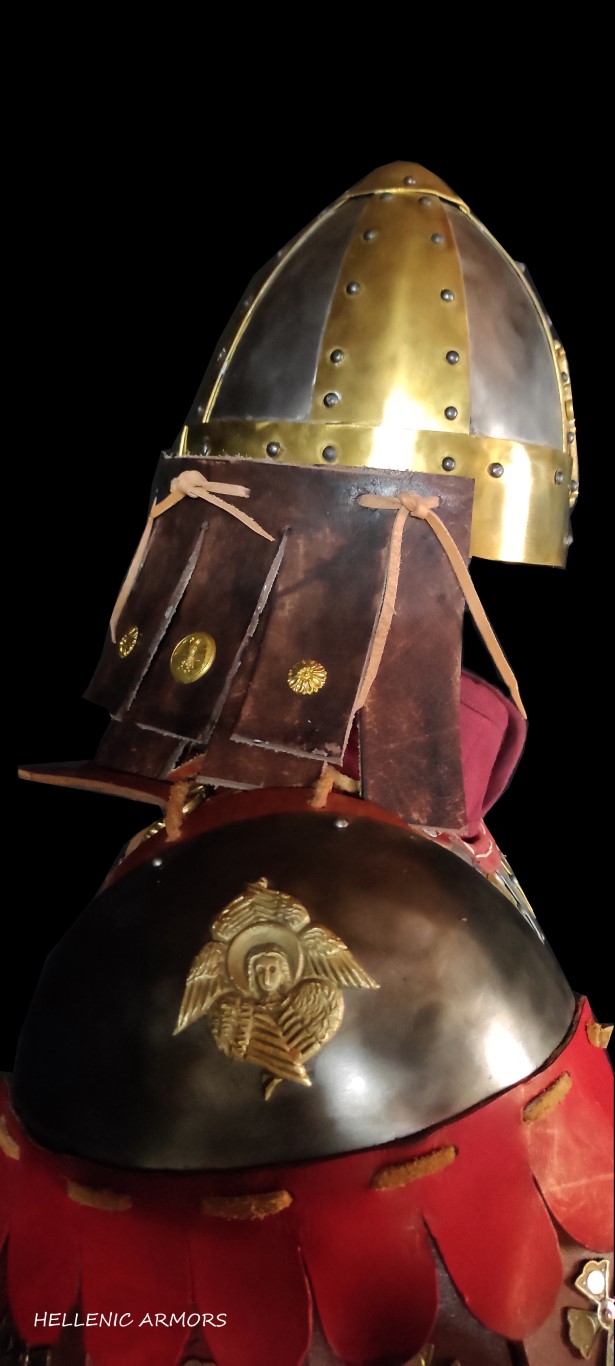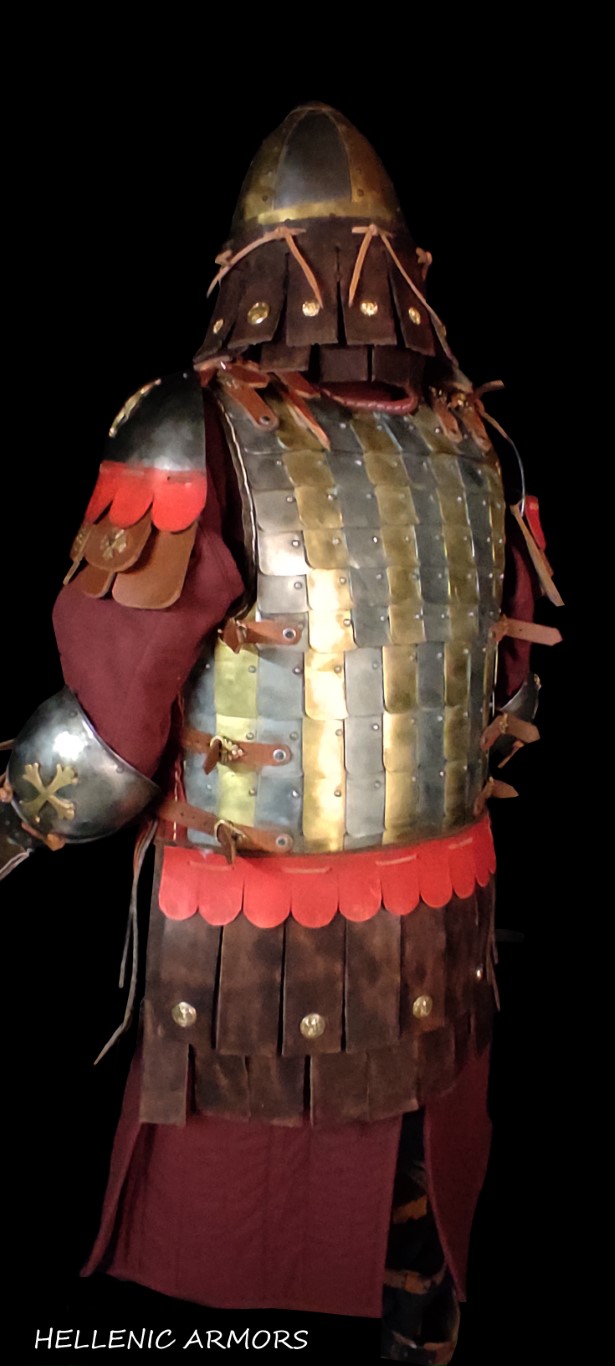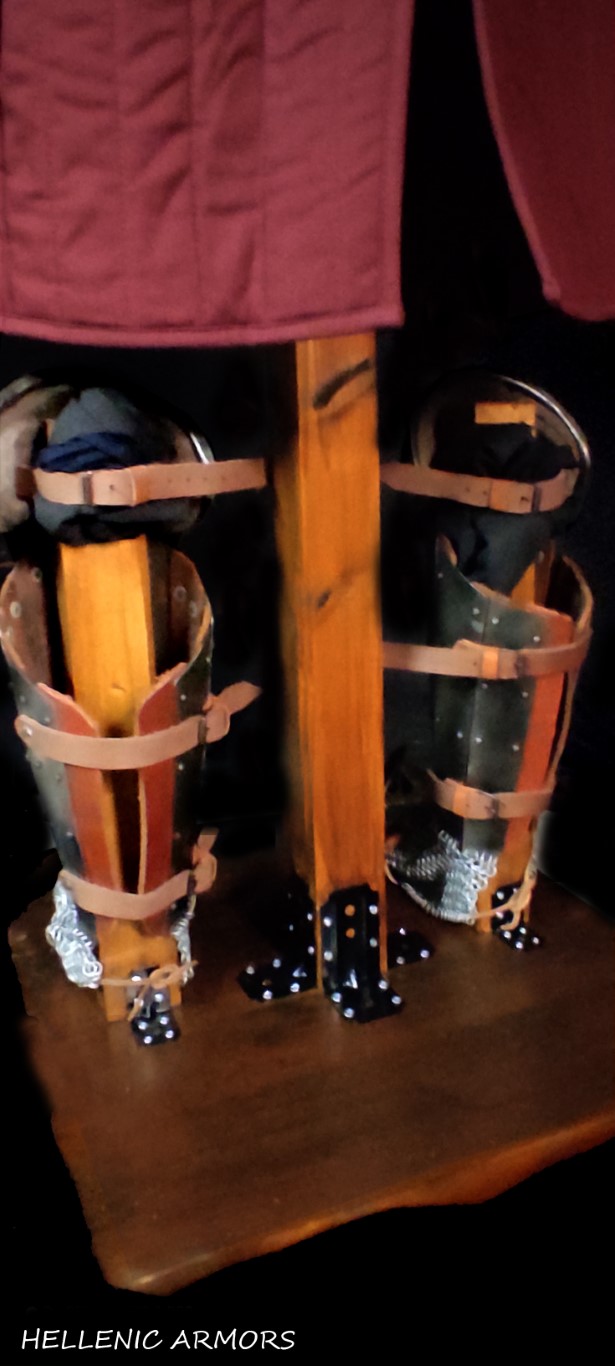Medieval Byzantine Armors
Late Byzantine Armor 13th -14th century AD
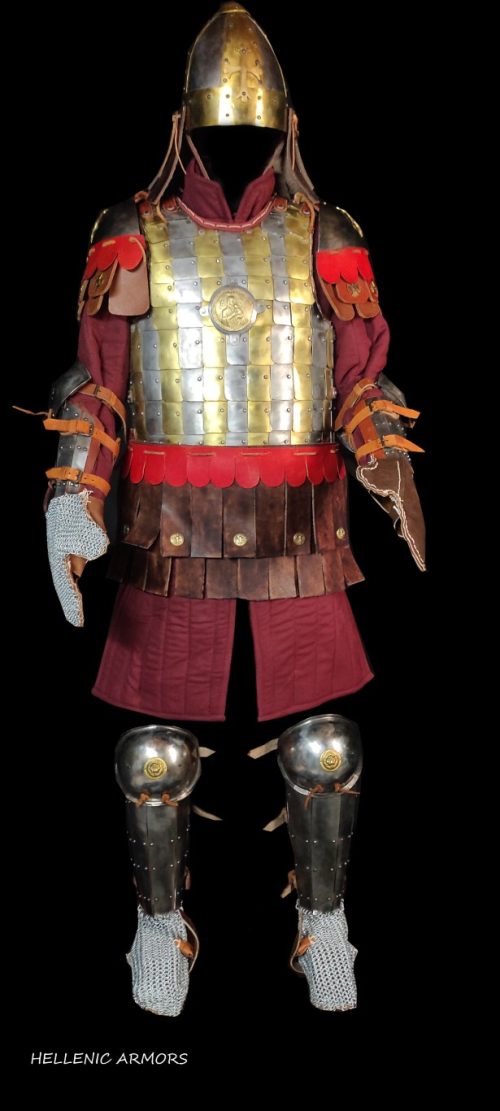
The actual archaeological evidence available to us for the late Byzantine armor,13th-14th century AD is relatively few and scarce. Using as a guide the illustrations of Orthodox Military Saints of this period, the armorer Dimitrios Katsikis created a set of armor that follows the basic trends of Byzantine Hagiography of the Late Byzantine era. Helmet:. A composite conical helmet of “Spangenhelm” typology with hanging leather detachable curtains protecting the half back. This very typology appears very often to the military Byzantine iconography.Cuirass: Τhe protection of the main torso is composite, is been consisted from the frontal and the radial thorax which are being held together with pairs of buckles to the both armpit sections and to the shoulder area (right&left of the neck).The surface is covered by numerous bronze and iron rectangular pieces densely riveted into leather backing in a horizontal deployment. In the middle of the pectoral area has been placed a bronze icon of Panagia (Virgin Mary) as an apotropaic symbol of high significance. Arm defence: The forearm protection was known as “cheiropsella- χειρόψελλα”. Ιn this very occasion the guards are composite of a splinted structure. Iron elongated rectangular plates with rids have been riveted to a leather backing, shaping an anatomical tube able to “envelope” the forearm of the soldier. For the elbow protection, convex iron arrangement have been set in place, with decorative bronze crosses of middle Byzantine style placed on their exterior. The fastening system is being consisted by pairs of straps and Byzantine fashion buckles.The protections of the palms is being achieved by the “cheirotia- χειρότια”, gloves consisted by chainmail made of small diameter bronze iron rings. This specific structure enable high grade of flexibility and protection.Kremasmata, or thigh guards:Double layer of thick leather strips covers the groin and the tops of the legs above the knees.The lower legs are protected or “podopsella”: The greaves are made of vertical iron pieces hold together with inner leather backing shaping an anatomical structure able to surrounds the shin. A pair of convex iron arrangement (knee cups) cover the knee areas, bearing bronze decoration of lion head. The lower part is being covered with chain mail consisted by hundreds iron rings, they rap entirely the shoes with a suitable fastening mechanism.
